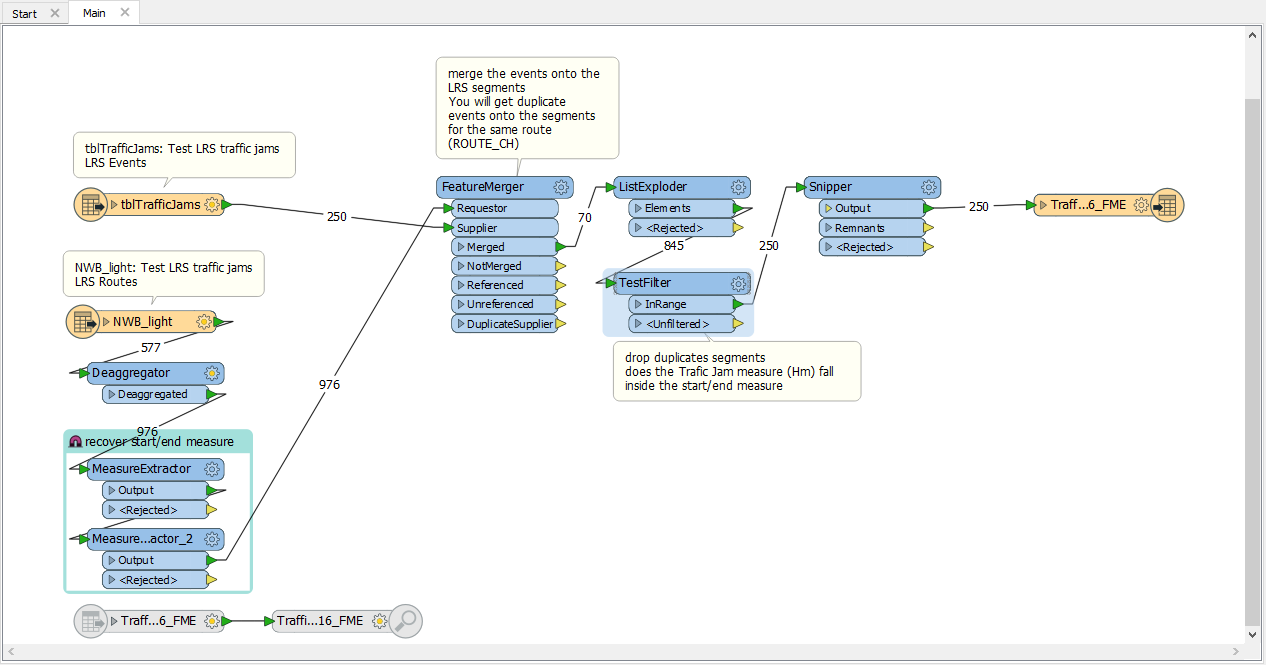Hi All,
i have a problem with linear referencing in FME! I use a filegeodatabase (see attached zip file) that contains a event tabel with a subset of traffic jams, a route key (route) and measures (hm) are included in the table. In the database there is also a roadnetwork featureclass that contain measures. The common route field in the roadnetwork is "ROUTE_CH". In the fme workbench a tried to do a linear ferencing with those event tabel and route feature class but the result is not what i expect. The tabel contain 250 features but the output in the FME workbench has only 94 features as output (the "ArcGis" method results in an output of 250 features), output feature class from the workbench is "Trafficjams2016_FME"..
Of course i can use ArcGis for linear referencing but i prefer FME because i wil made a complete automatic proces that wil daily update and publish the trafficjams on Dutch highways.
So what is going wrong in my workbench? I expect in the FME output feature class all the items from the table!
(the attached zip file contains the fgdb en de FME workbench)
Thanks for your help!
Peter






